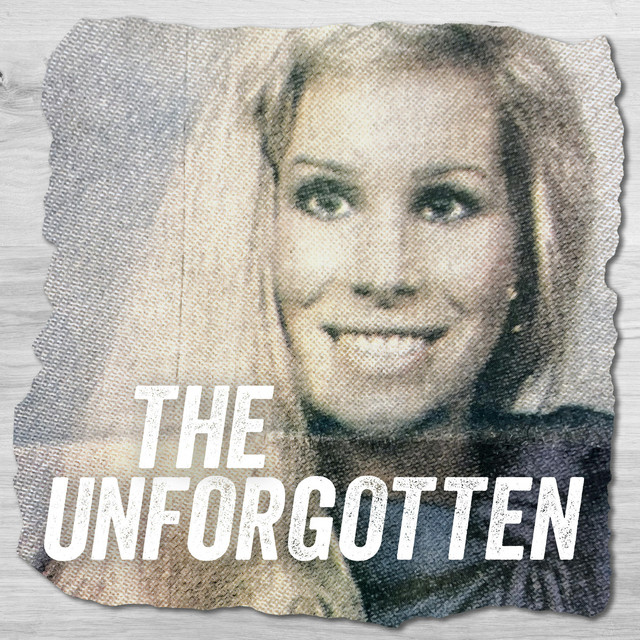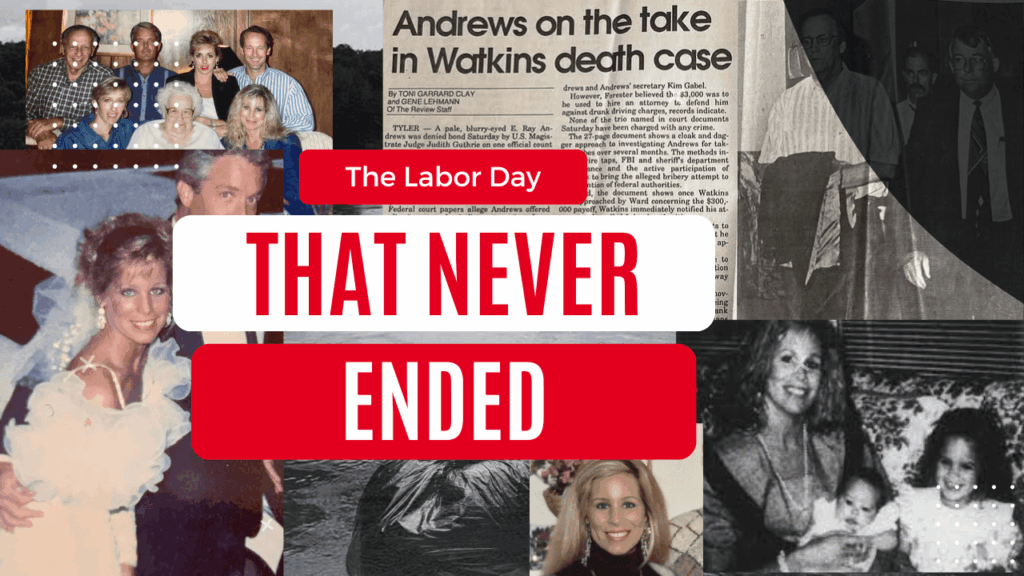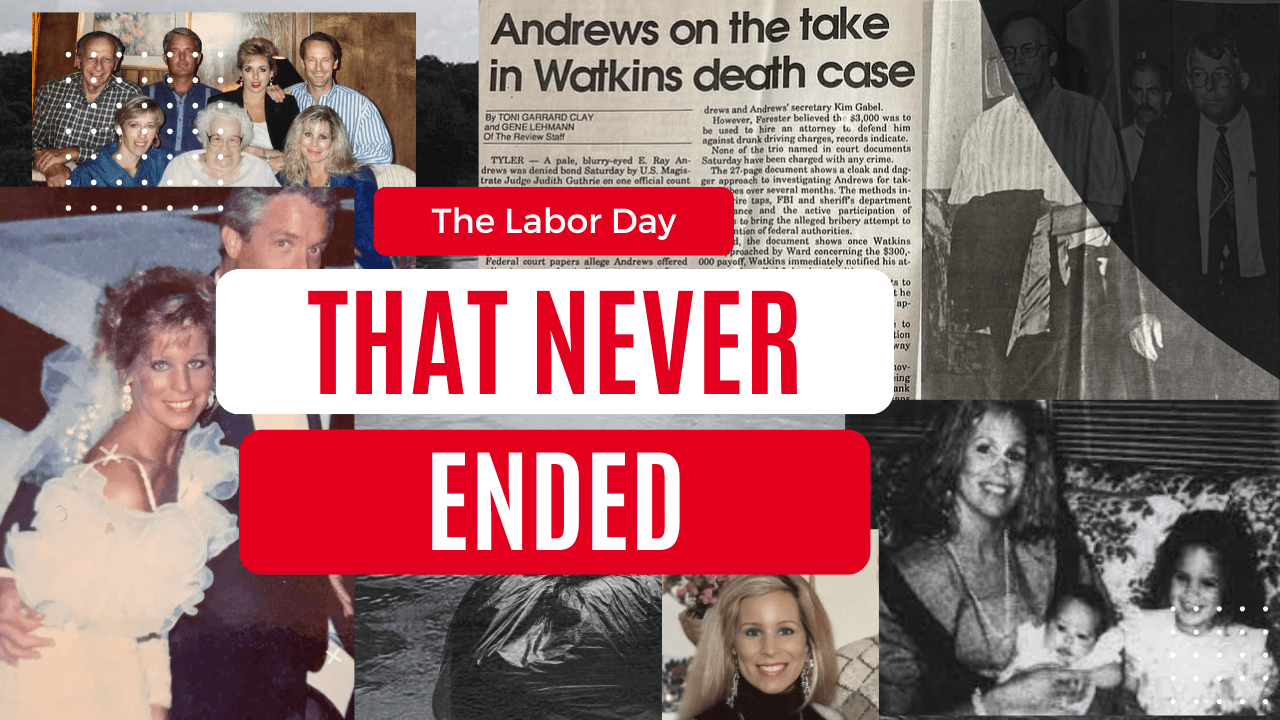After 32 years and a corruption scandal that derailed justice, new DNA evidence and viral podcast attention have breathed life into a murder case that haunts a Texas community
The Trinity River still runs past Corsicana, Texas, same as it did on Labor Day 1993 when 35-year-old Shelley Watkins vanished from her home after fighting with her husband. Jerry Mack Watkins owned a construction company and had money, the kind of money that can make problems disappear in small Texas towns. Seven days after Shelley went missing, her body turned up in those river waters, wrapped in black plastic and weighted down with concrete blocks.
Thirty-two years later, the question isn’t just who killed Shelley Watkins. It’s whether a case that got torpedoed by corruption, kept alive by stubborn family members, and now thrust back into the spotlight by podcasters can finally get the justice it’s been waiting for.
The Podcast Effect

Carol Dawson and Wes Ferguson probably didn’t expect much when they started “The Unforgotten” last July. True crime podcasts are everywhere these days. But their 10-episode deep dive into Shelley’s murder hit #17 on Spotify’s charts and has stayed in Apple’s Top 100 for months. Suddenly, a case that had been moldering in Henderson County files was getting the kind of attention usually reserved for Netflix documentaries.
The podcast did something right that a lot of true crime gets wrong: it kept Shelley at the center instead of turning her murder into entertainment. The hosts dug into evidence that had been sitting around since one of Texas’s uglier corruption scandals blew up the original prosecution. Now 20/20 and Sundance TV are sniffing around, which means this story has legs.
Here’s the thing about podcast fame, though: it doesn’t solve murders. The question everyone’s asking now is whether all this attention can actually move the needle on a case that’s been stuck for three decades.
When Justice Goes Crooked
You want to understand why this case matters beyond the usual true crime angles? Look at what happened when they actually tried to prosecute Shelley’s killer back in 1993.
Henderson County DA E. Ray Andrews got an indictment against Jerry Mack Watkins in December that year. Shelley’s family thought they were finally getting somewhere. Then it all went to hell.
Turns out Andrews had been shopping around for a $300,000 bribe connected to the case. When that came to light, his conviction meant the charges against Watkins got tossed. Double jeopardy rules meant they couldn’t just refile; the whole thing was poisoned.
Think about that for a minute. A prosecutor’s greed didn’t just derail one case; it potentially let a murderer walk free forever. “This case has never been closed,” former Sheriff Ray Nutt told the local paper, and you can hear the frustration in those words. When the system meant to get justice for victims becomes part of the problem, families pay the price for generations.
The DNA Game Changer
The biggest break in the case came from science, not the courtroom. This past January, the podcast hosts dropped a bombshell: DNA from an unknown male had been found on materials recovered with Shelley’s body. The evidence was always there (collected back in 1993) but technology has come a long way since then. The Henderson County Sheriff’s Office sent it to California for advanced testing in 2019.
The kicker? It doesn’t match Jerry Mack Watkins.
That changes everything. Instead of a straightforward domestic murder case, investigators are now looking at the possibility of multiple attackers or an entirely different suspect. It raises questions about whether the original investigation put all its eggs in one basket.
But DNA is only useful if you know what to do with it. Texas law enforcement agencies are stretched thin, and even promising forensic evidence can sit on shelves if nobody’s pushing to get it processed or compared against databases. The question is whether this DNA will lead somewhere or join the thousands of other unmatched profiles gathering digital dust.
Thirty-Two Years of Fighting
While podcasters and journalists move on to the next case, Shelley’s family has been fighting for answers since 1993. Her sister Sandy Cripps has become the keeper of Shelley’s memory, making sure people remember that she was more than just a murder victim. “Vibrant and loving,” Sandy calls her sister. “A good mom” who made people laugh and adored her two little girls.
The family isn’t just grieving; they’re organizing. There’s a “Justice For Shelley” digital billboard on Interstate 45 near Corsicana that makes sure drivers see her name and face. It’s their way of saying this isn’t over, that someone out there knows something.
Sandy and the rest of Shelley’s family represent what gets lost in most true crime coverage: the human cost of unsolved cases. They’ve lived with questions and suspicions for 32 years, knowing that whoever killed their loved one is still walking around free. The podcast gives them hope, but it’s hope mixed with wariness. They’ve had justice snatched away before.
So What Now?
Here’s the uncomfortable truth about true crime fame: it’s fickle. “The Unforgotten” created a moment, but moments don’t last long. Media attention moves on, and law enforcement often sees podcast-driven pressure as more hassle than help.
The Henderson County Sheriff’s Office is still investigating, but they’re not exactly chatty about what they’re doing. Current DA Jenny Palmer hasn’t said word one about the case publicly, which leaves everyone guessing about whether there’s any real momentum building behind the scenes.
For anything meaningful to happen, several things need to line up: investigators who’ll actually work the case, follow-through on that DNA evidence, and maybe most importantly, a new grand jury willing to take a fresh look without the corruption baggage that killed the first prosecution.
The family is hoping all this attention might push officials toward exactly that kind of grand jury inquiry. In Texas, grand juries have broad powers—they can compel testimony and demand evidence in ways regular investigations can’t. A new grand jury could examine everything with fresh eyes, including the DNA and whatever new tips the podcast might have generated.
But that’s a lot of “ifs” and “maybes” for a family that’s been waiting three decades for answers.
The Bigger Picture
Shelley’s case isn’t just about one murder in one Texas town. It’s about how many other cases got screwed up by crooked prosecutors, how many families got denied justice because somebody in power decided to line their pockets instead of do their job.
In Corsicana, Shelley’s murder has become something of a symbol—proof that the system can fail spectacularly and that families are often left to fight for justice on their own. The podcast shows there’s an appetite for accountability, but it also highlights how big the gap is between attention and action.
Good true crime podcasting can work like accountability journalism, keeping pressure on cold cases and shining light on investigative failures. But podcasters can’t compel DNA testing, fund investigations, or convene grand juries. They can make noise, but somebody else has to do the actual work.
Where Things Stand
It’s June 2025, and the Shelley Watkins case sits at a crossroads. The podcast generated more attention than this case has seen in decades. There’s DNA evidence from an unknown male sitting in some lab somewhere. The family keeps pushing for action. Major media outlets are reportedly interested, which could mean even more pressure.
But attention without follow-through is just another form of exploitation. The real test isn’t how many people download the podcast; it’s whether anyone with actual power will use it to restart a real investigation.
The Henderson County Sheriff’s Office still takes tips on the case, and the family maintains a website where people can submit information. Whether the podcast’s success will generate useful tips remains to be seen.
For Shelley’s family, all this attention cuts both ways. There’s hope that 32 years of waiting might finally pay off. But there’s also the risk that another wave of media coverage will crash against the same institutional barriers that have protected her killer all this time.
The Trinity River keeps flowing past Corsicana, carrying its secrets toward the Gulf. Somewhere in that current lies the truth about what happened to Shelley Watkins on Labor Day 1993. Whether renewed attention, new evidence, and stubborn family advocacy can finally pull that truth to the surface is the question that matters now.
Justice delayed isn’t always justice denied in cold cases—but somebody has to keep fighting for it. In Corsicana, that fight goes on, one podcast download and one tip at a time.
Anyone with information about the Shelley Watkins case can submit tips by CLICKING HERE.
The case remains under active investigation.
PLEASE NOTE: This website is not affiliated with law enforcement in any way.




